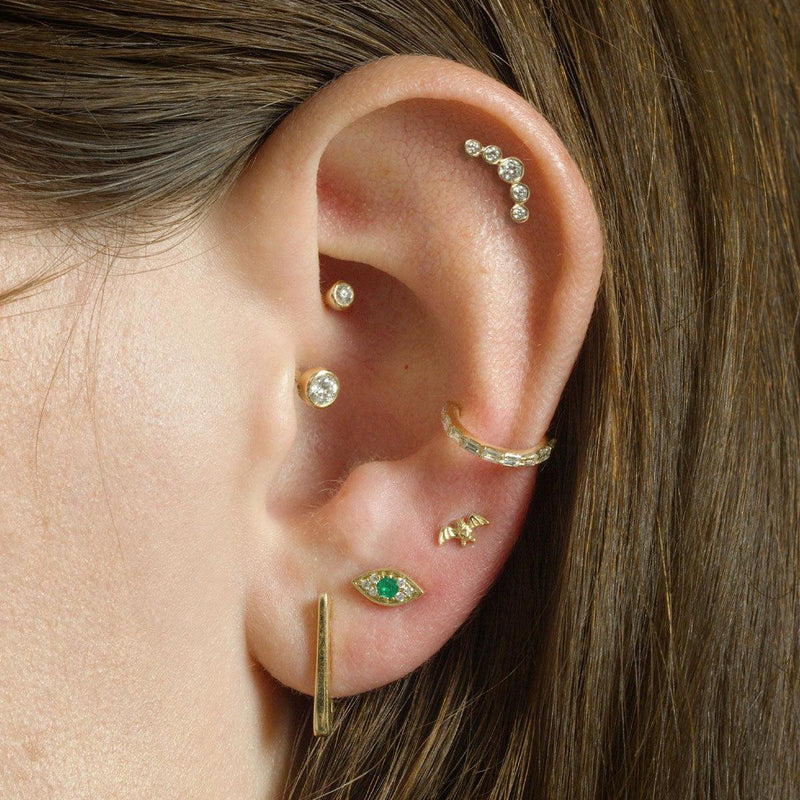Ear modifications have become increasingly popular in Dubai, with individuals expressing their personal style through various forms of ear adornment. Among these, Ear Piercing in Dubai and ear stretching are two prominent techniques that often get confused. While both involve altering the ears for aesthetic purposes, they are fundamentally different in terms of methods, purposes, and aftercare. In this article, we will explore the key differences between ear piercing and ear stretching, helping you make an informed decision about which option may be right for you.
Understanding Ear Piercing
What Is Ear Piercing?
Ear piercing involves creating a small hole in the earlobe or cartilage to accommodate jewelry. This practice is one of the most common forms of body modification and has been culturally significant in various societies for centuries.
Types of Ear Piercings
There are several types of ear piercings you can consider, including:
- Lobe Piercing: The most common form, typically performed on the fleshy part of the earlobe.
- Cartilage Piercing: Done on the upper ear cartilage, such as the helix, tragus, or conch.
- Industrial Piercing: A combination of two piercings connected by a barbell.
Healing Process
The healing time for ear piercings varies based on the location:
- Lobe Piercing: 6-8 weeks
- Cartilage Piercing: 3-12 months
During this period, proper aftercare is essential to prevent infections and complications.
Jewelry Options
Jewelry for ear piercings can range from simple studs to elaborate hoops and dangles. Materials used for jewelry can include surgical stainless steel, titanium, and gold, which are generally hypoallergenic and safe for most skin types.
Understanding Ear Stretching
What Is Ear Stretching?
Ear stretching, also known as ear gauging, is the process of gradually enlarging a previously pierced hole to accommodate larger gauges of jewelry. This practice is often associated with alternative fashion and subcultures, but it has gained mainstream popularity.
The Stretching Process
Ear stretching involves a gradual process where the piercings are slowly expanded using specially designed jewelry, such as tapers or plugs. Here’s how it typically works:
- Initial Piercing: Start with a standard piercing (usually done at 18G to 14G).
- Stretching: Over time, the piercing is stretched to accommodate larger sizes, typically up to 2G, 0G, or larger, depending on personal preference.
Healing and Aftercare
The healing time for stretched ears varies depending on the size of the gauge and the individual’s skin elasticity:
- Small Stretch (e.g., 14G to 12G): Approximately 1-2 months
- Larger Stretch (e.g., 0G and above): Can take several months to heal fully.
Aftercare for stretched ears requires using appropriate moisturizers and oils to maintain skin elasticity and prevent tearing.
Jewelry Options
Jewelry used in ear stretching can include:
- Tapers: Used for the stretching process.
- Plugs: Larger jewelry pieces that fit into the stretched hole.
- Tunnel: A hollowed-out piece of jewelry that allows visibility through the piercing.
Materials for stretched ear jewelry often include silicone, glass, wood, and metal, catering to a variety of styles and preferences.
Key Differences Between Ear Piercing and Ear Stretching
1. Technique and Process
- Ear Piercing: Involves creating a small hole in the ear using a needle or piercing gun. The focus is on inserting jewelry without altering the size of the hole significantly.
- Ear Stretching: Involves gradually enlarging an existing piercing over time to accommodate larger jewelry sizes. This is a more involved process requiring patience and proper technique.
2. Purpose and Aesthetic
- Ear Piercing: Primarily done for aesthetic purposes, allowing individuals to wear various types of jewelry.
- Ear Stretching: Often associated with personal expression and cultural significance, particularly within certain subcultures.
3. Healing Time
- Ear Piercing: Generally heals faster, especially for lobe piercings (6-8 weeks) compared to cartilage piercings.
- Ear Stretching: Healing time varies widely based on the size of the gauge and the individual’s skin, often requiring months for larger stretches.
4. Aftercare Requirements
- Ear Piercing: Requires cleaning the area and monitoring for signs of infection.
- Ear Stretching: Focuses on maintaining skin elasticity and ensuring no tearing occurs during the stretching process.
5. Jewelry Options
- Ear Piercing: Offers a range of styles from small studs to large hoops.
- Ear Stretching: Typically involves specific types of jewelry designed for larger gauges, including plugs and tunnels.
Cultural Significance in Dubai
In Dubai, ear piercing is often a rite of passage, especially among young girls, who may get their ears pierced during special ceremonies. Cultural beliefs surrounding piercing vary across communities, with some considering it a tradition that signifies maturity.
On the other hand, ear stretching is less common and may be viewed as a form of self-expression associated with specific subcultures. While both practices are widely accepted, ear piercing generally enjoys more mainstream popularity.
Conclusion
Whether you choose ear piercing or ear stretching, understanding the differences between the two will help you make an informed decision about which option suits your personal style and lifestyle. Dubai’s vibrant culture offers a wide range of professional studios and jewelry options, ensuring that your ear modification journey is both safe and satisfying. Always consult with experienced professionals, follow proper aftercare, and choose high-quality jewelry to enjoy your ear adornments for years to come.





Comments